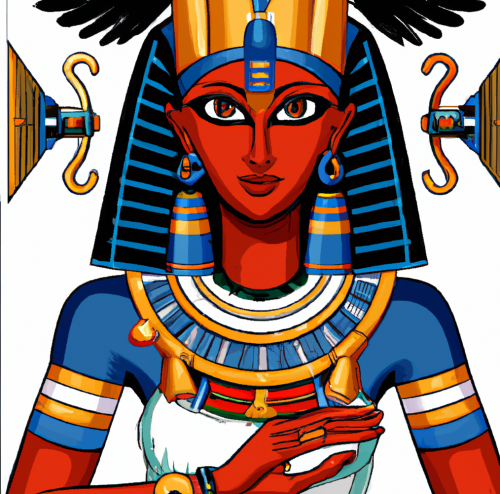Hathor, also known as Hetheru, is a goddess from ancient Egyptian mythology who is often depicted as a woman with cow’s horns and a sun disk, symbolizing her association with the sky and the heavens. She is the goddess of love, beauty, fertility, and motherhood and is often associated with the protection of women and children.
But, don’t let her heavenly appearance fool you, Hathor was also known for her wild and party-loving side. She was often associated with music, dance, and drunkenness, and was known to be the goddess of pleasure, joy, and the arts. In fact, the ancient Egyptians would often hold festivals in her honor, where they would drink, dance, and make offerings to her in hopes of gaining her favor and protection.
Hathor was also known as the goddess of fertility and motherhood, and in ancient Egypt, she was often invoked during childbirth and other fertility rituals. She was believed to have the power to protect pregnant women and to bless them with healthy and strong children. Her association with fertility and motherhood is also the reason why she was often depicted with a cow’s horns, as a symbol of motherly love and nurturing.
But Hathor’s role was not limited to love and motherhood, she was also the goddess of the sky, and was associated with the sun and the stars. She was often depicted with a sun disk and cow’s horns, which symbolize her association with the heavens. In this aspect, she was considered as a goddess of protection, as she was believed to protect the pharaohs and the people from the dangers of the sun.
One of the most interesting facts about Hathor is that she was also considered the goddess of the dead and the afterlife. She was often depicted in tombs, offering protection and guidance to the deceased in the afterlife.
Hathor was a daughter of Ra. She was the consort of many gods in the Egyptian pantheon, which fits right in with her role of being the goddess of love.

